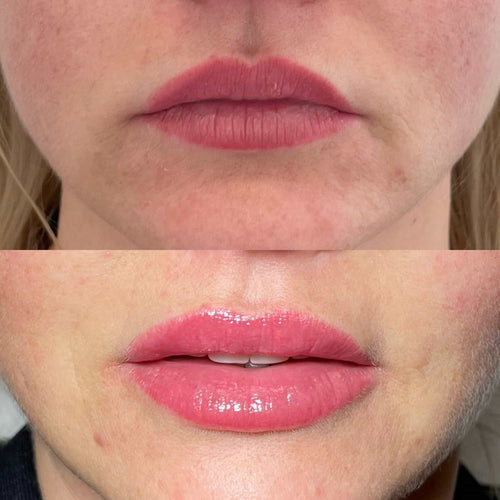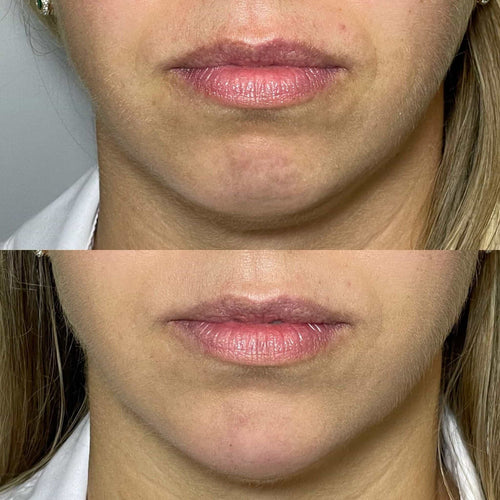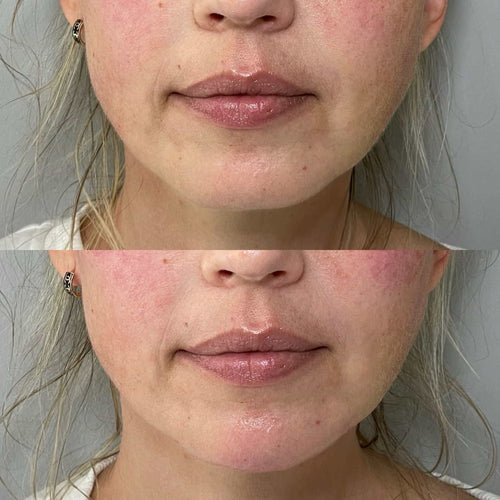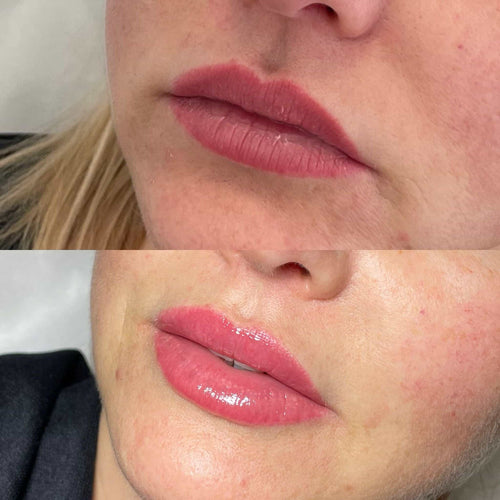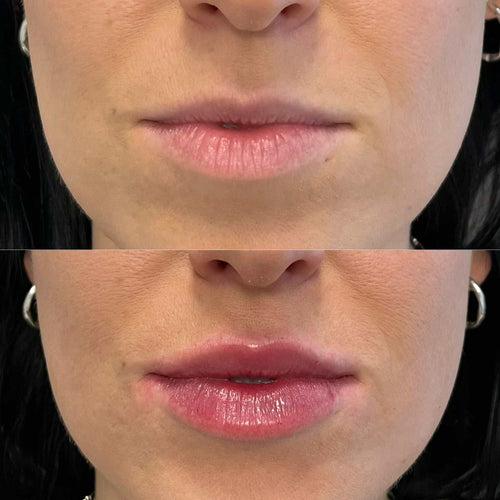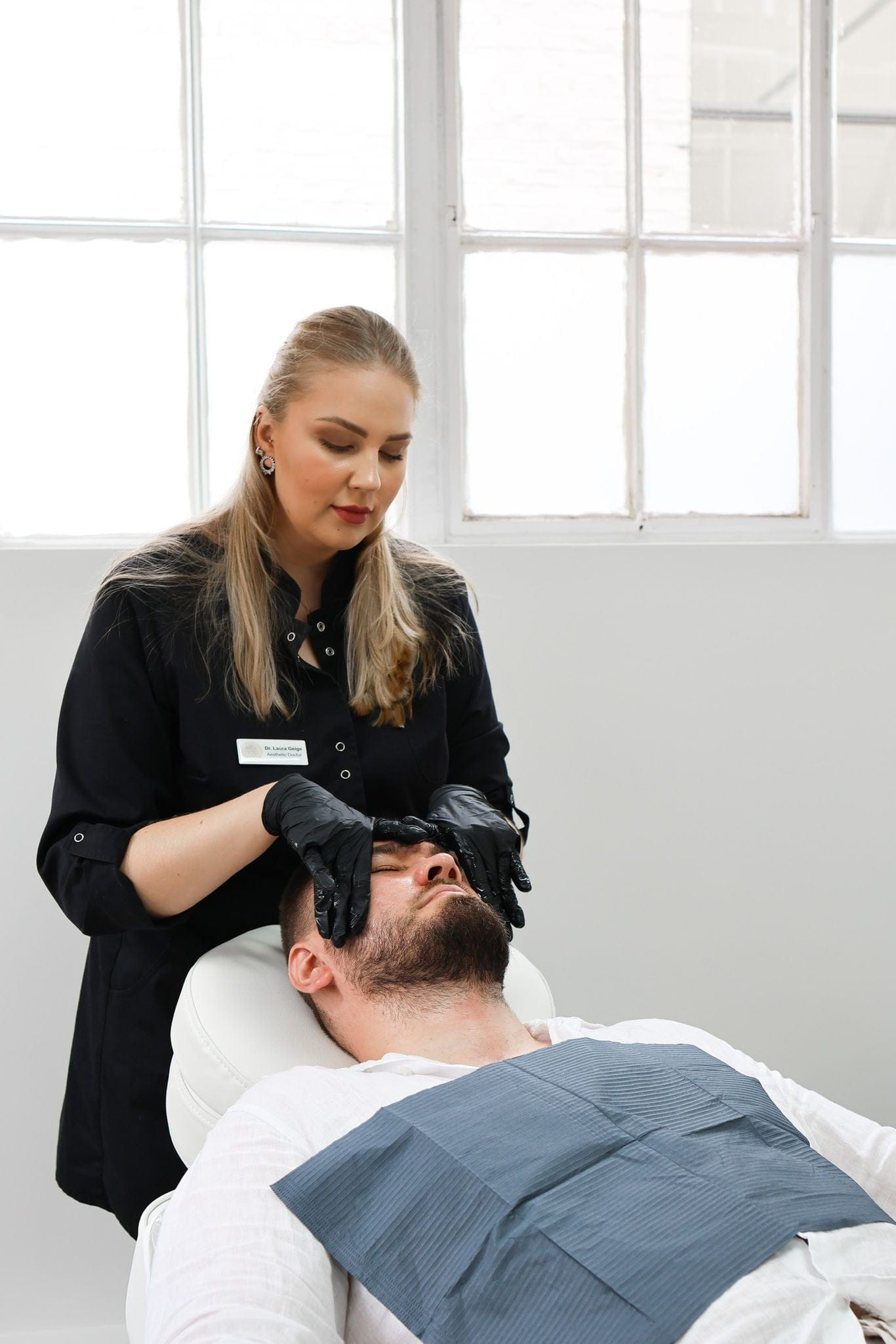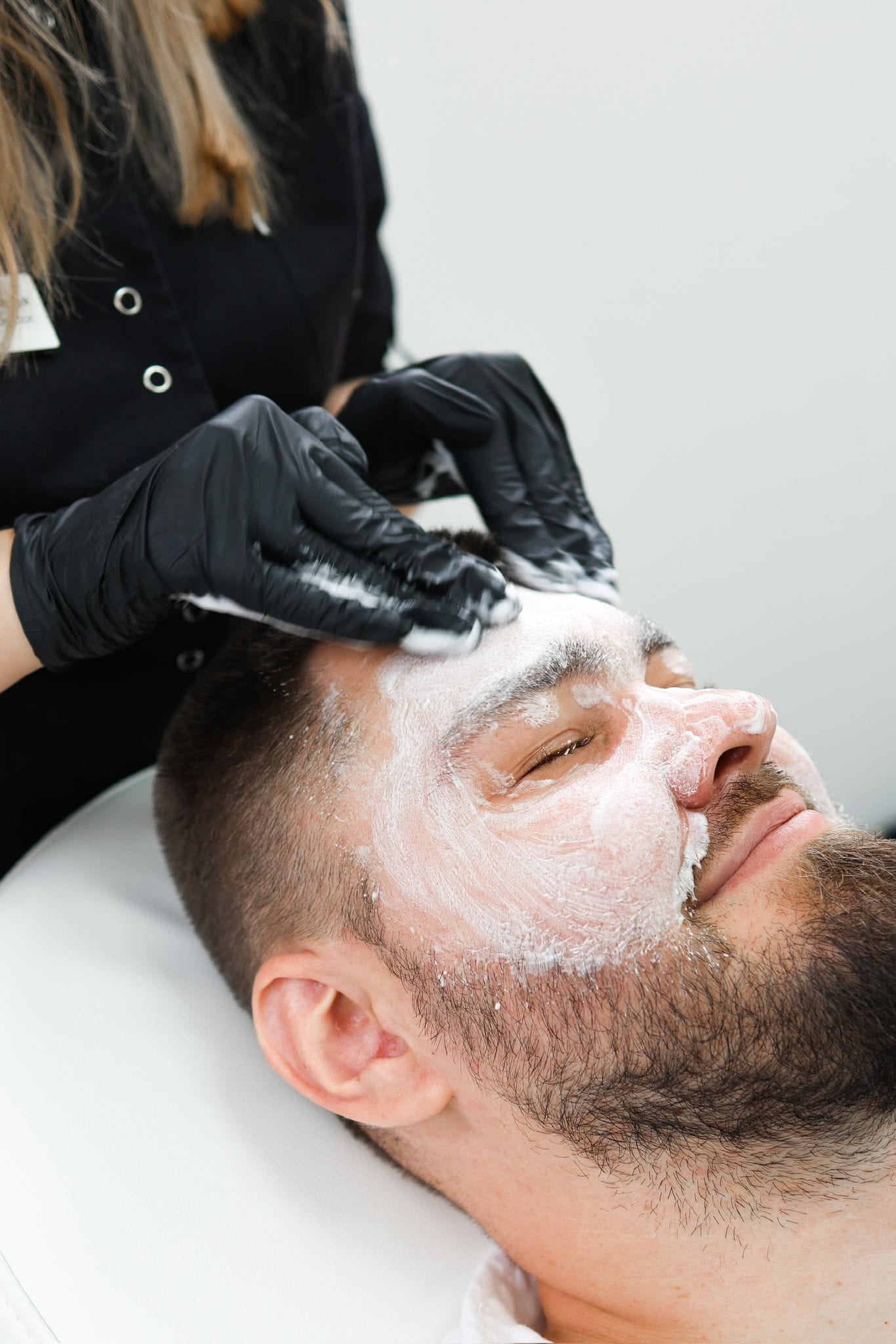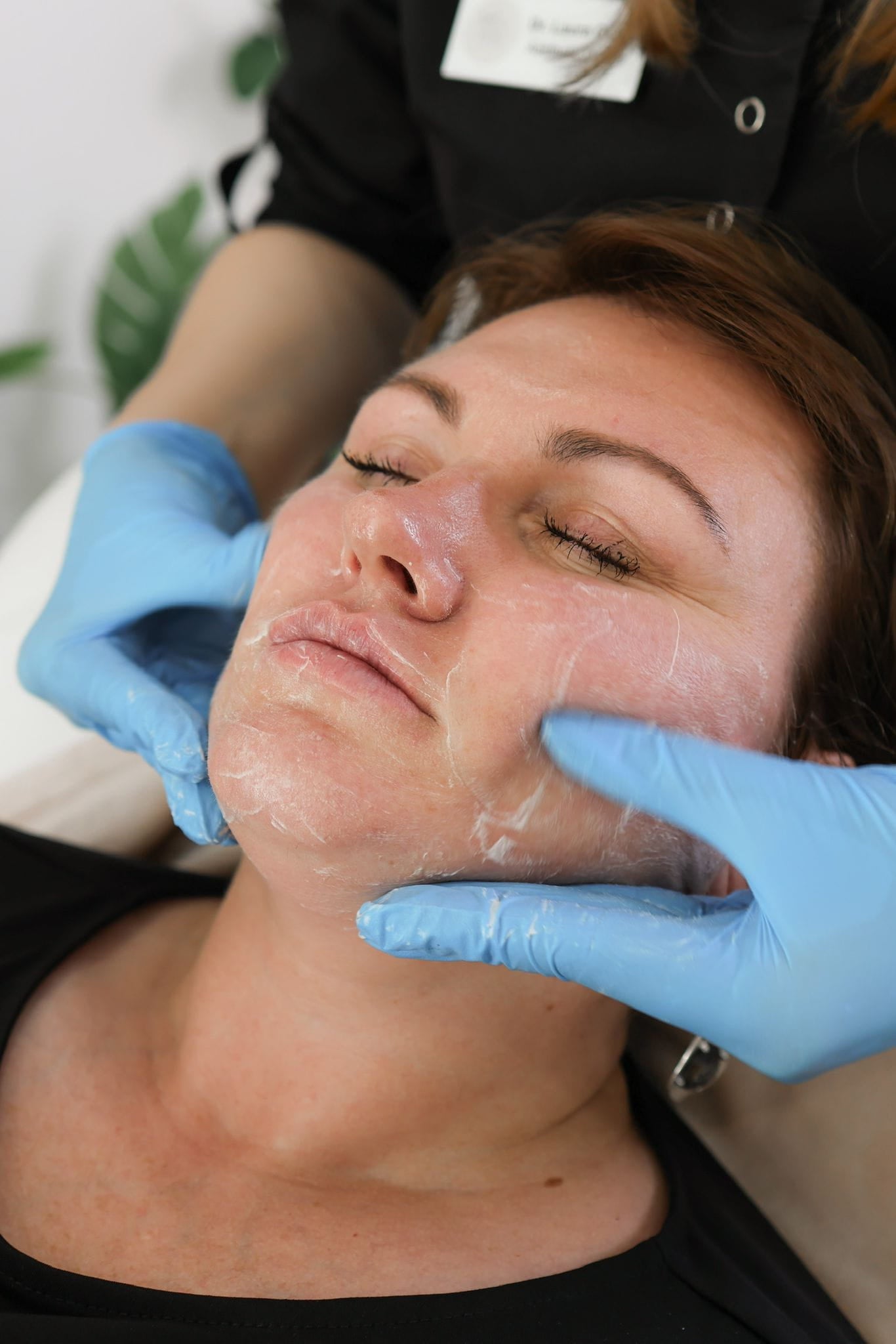Discover More About Dermal Fillers at It’s Me and You Clinic
Understanding the Downturned Smile Treatment near Hale, Surrey
Causes of a Downturned Smile
A downturned smile, also known as a “sad smile,” refers to a facial expression where the corners of the mouth are lowered, giving the appearance of sadness or dissatisfaction.
The downturned smile can be caused by a variety of factors, including:
- Genetics: Some people may inherit a tendency to frown or have a downturned smile due to their facial structure and bone alignment.
- Muscle imbalance: Weakness or overactivity in the muscles responsible for smiling can lead to a downturned smile.
- Neuromuscular disorders: Conditions such as TMJ (Temporomandibular Joint) disorder, bruxism, and facial paralysis can affect the muscles of the face and cause a downturned smile.
- Psychological factors: Stress, anxiety, depression, and other mental health conditions can lead to a downtuned smile.
A downturned smile can also be caused by orthodontic issues, such as:
- Overbites or underbites: Misalignment of the teeth can lead to an uneven bite and cause the corners of the mouth to droop.
- Crossbites: When the upper and lower teeth overlap, it can put pressure on the muscles of the face and cause a downturned smile.
- Tooth alignment issues: Misaligned or crooked teeth can affect the appearance of the smile and lead to a downtuned expression.
The Downturned Smile Treatment is a comprehensive approach that addresses the underlying causes of a downturned smile. The goal of treatment is to restore a natural, healthy-looking smile that reflects the patient’s emotional state and overall well-being.
Some common treatments for a downtuned smile include:
- Muscle relaxants: To treat muscle imbalances or spasms that are contributing to the downturned smile.
- Facial exercises: To strengthen the muscles of the face and improve muscle balance.
- Cosmetic treatments: Such as Botox injections or facial fillers to address fine lines, wrinkles, and age-related changes that may be contributing to a downturned smile.
A comprehensive treatment plan for a downtuned smile typically includes a combination of these treatments, tailored to the individual patient’s needs and goals.
It’s worth noting that treating a downtuned smile can have a significant impact on a person’s overall quality of life. A healthy, natural-looking smile can boost self-confidence, improve mental health, and even enhance social interactions.
Aesthetic Concerns
Downturned smile treatment refers to a cosmetic surgical procedure that aims to correct a facial asymmetry issue where one side of the face appears to be turned down or saggy compared to the other side.
This condition is also known as a “sagging” or “droopy” face, and can occur due to various reasons such as muscle weakness, nerve damage, or excessive facial fat.
In Hale, Surrey, there are several clinics that offer downturned smile treatment using advanced surgical techniques and equipment to ensure optimal results.
One of the most common causes of a downturned smile is weakness in the facial muscles, particularly the zygomaticus major muscle, which plays a crucial role in smiling and maintaining facial symmetry.
The procedure typically involves the use of temporary or permanent fillers, such as hyaluronic acid or collagen, to fill in the depressed area on one side of the face, creating a more balanced and harmonious appearance.
Alternatively, surgical techniques like fat grafting or muscle repositioning may be employed to correct the issue by transferring fat from another part of the body to the affected area or repositioning weakened muscles to restore facial symmetry.
Aesthetic concerns related to downturned smile treatment in Hale, Surrey, include restoring a more youthful and radiant appearance, enhancing facial balance and proportion, and improving overall self-confidence.
Another significant concern is the potential for complications, such as infection, scarring, or temporary numbness or weakness in the face, which can be mitigated with proper medical care and attention to post-operative instructions.
It’s essential to consult a qualified and experienced plastic surgeon or dermatologist who has extensive expertise in downturned smile treatment to discuss individual needs and determine the most suitable course of action.
A thorough evaluation and examination will help identify the underlying cause of the downturned smile, assess the extent of facial asymmetry, and recommend the best treatment option based on personal preferences and goals.
Throughout the treatment process, patients can expect a comprehensive consultation with their chosen healthcare professional, including pre-operative assessments, post-operative care instructions, and follow-up appointments to ensure optimal recovery and satisfaction.
In addition to addressing aesthetic concerns, downturned smile treatment in Hale, Surrey, can also have a significant impact on overall mental health and well-being by improving self-confidence, reducing feelings of self-consciousness, and promoting a more positive body image.
A downturned smile, also known as a “smile asymmetry,” can be caused by a variety of factors including overbites, underbites, and teeth misalignment. According to the British Dental Association (BDA), these issues can arise due to genetic predisposition or can result from poor dental alignment during childhood.
A downturned smile, also known as a “smile asymmetry,” can be caused by a variety of factors including overbites, underbites, and teeth misalignment.
In order to understand the downturned smile treatment options available near Hale, Surrey, it is essential to first comprehend the underlying causes of this issue.
According to the British Dental Association (BDA), these issues can arise due to genetic predisposition or can result from poor dental alignment during childhood.

Poor dental alignment during childhood can occur when the upper and lower teeth do not meet properly, leading to an uneven bite. This misalignment can cause the teeth to grow in at different angles, resulting in a downturned smile.
Overbites are another common cause of downturned smiles. An overbite occurs when the upper teeth significantly overlap the lower teeth, causing the lips and tongue to curl down, giving the appearance of a downturned smile.
Underbites, on the other hand, occur when the lower teeth protrude beyond the upper teeth, resulting in an uneven bite and a downturned smile.
Teeth misalignment can also be caused by various orthodontic issues, such as crossbites and open bites. These issues can cause the teeth to shift out of their proper position, leading to uneven alignment and a downturned smile.
Fortunately, there are various treatment options available for individuals with downturned smiles near Hale, Surrey.
Orthodontic treatment is often the most effective way to correct a downturned smile. This involves using brackets, wires, and other orthodontic devices to gradually shift the teeth into their proper position.
In some cases, dental implants may be necessary to replace missing or damaged teeth, which can help improve the overall appearance of the smile.
Smile makeovers and cosmetic dentistry procedures can also be used to enhance the appearance of a downturned smile. These treatments involve reshaping and refining the teeth and gums to create a more symmetrical and aesthetically pleasing smile.
For individuals who have experienced traumatic injuries or tooth loss due to decay, dental crowns or bridges may be necessary to restore the teeth and prevent further damage.
It is essential for individuals with downturned smiles to consult with an orthodontist or dentist near Hale, Surrey, to determine the most suitable treatment option for their specific needs.
A thorough examination and consultation will help identify the underlying causes of the downturned smile and develop a personalized treatment plan that addresses these issues.
By seeking professional help from an experienced orthodontist or dentist, individuals can achieve a more confident and aesthetically pleasing smile that enhances their overall quality of life.

Treatment Options near Hale, Surrey
A downturned smile, also known as a depressible smile or a sad smile, refers to a facial expression where the corners of the mouth curve downwards, creating an unattractive and unfriendly appearance.
This type of smile is often caused by a variety of factors such as stress, anxiety, or even a medical condition. However, in many cases, it can also be the result of inadequate teeth alignment or improper dental work, which can lead to uneven tooth spacing and overlapping.
The Downturned Smile Treatment near Hale, Surrey, offers a range of solutions to address this cosmetic issue and restore a more confident and attractive smile.
One common treatment option is orthodontic therapy, which involves the use of braces or clear aligners to correct teeth alignment and positioning. By straightening the teeth and improving their spacing, orthodontics can help create a more even and balanced smile that doesn’t curve downwards.
Another treatment option for downturned smiles near Hale, Surrey, is dental implant surgery. This involves placing one or more artificial teeth into the jawbone to replace missing or damaged natural teeth. By restoring the dental structure, implants can help improve tooth alignment and overall facial appearance.
In addition to these options, some people may also benefit from a dental veneer procedure. Veneers are thin layers of porcelain or composite materials that are bonded onto the front of teeth to improve their shape, size, and color. By covering imperfections such as uneven enamel or overlapping teeth, veneers can help create a more uniform and attractive smile.
Other treatment options for downturned smiles near Hale, Surrey, include dental bonding, gum recession treatments, and facial contouring procedures. Each of these treatments addresses specific aspects of the downturned smile, from improving tooth alignment to enhancing facial structure and overall appearance.
In order to determine the best treatment option for a downturned smile, it’s essential to consult with a qualified dentist or oral surgeon near Hale, Surrey. They will assess the individual’s teeth, jawbone, and facial structure to recommend a personalized treatment plan that addresses the root cause of the problem and achieves optimal results.
A comprehensive consultation with a dental professional can also help address any related issues such as bite problems, tooth sensitivity, or TMJ disorders. By addressing these underlying concerns, it’s possible to create a more balanced and harmonious smile that reflects overall health and well-being.
Dentistled Treatment
A downturned smile, also known as a smile asymmetry or crooked smile, can greatly affect one’s self-confidence and overall appearance. It is essential to address this issue promptly to restore a balanced and harmonious facial structure.
Learn About the Impact of Botox on Your Appearance with Dr. Laura Geige
The Downturned Smile Treatment near Hale, Surrey, is designed to correct this imperfection by realigning the teeth and lips to create a more symmetrical and pleasing smile. This treatment is usually performed under the expertise of an experienced dentist or orthodontist who has in-depth knowledge of facial aesthetics and tooth alignment.
The procedure involves analyzing the patient’s teeth, gums, and facial structure to identify the underlying causes of the downturned smile. The dentist will use advanced imaging technologies such as intraoral cameras and 3D scanning to visualize the issue from multiple angles and create a customized treatment plan.
Depending on the severity of the problem, the Downturned Smile Treatment may involve a range of orthodontic and dental procedures. These may include aligning teeth using braces or Invisalign, crowning or bonding teeth, and adjusting the position of the upper lip to achieve a more balanced smile.
One of the primary goals of the treatment is to correct the bite relationship between the upper and lower teeth. By doing so, the pressure on the lips and facial tissues can be reduced, allowing for a more natural-looking smile that is both functional and aesthetically pleasing.
The treatment process typically begins with a thorough examination and consultation with the dentist or orthodontist. This is followed by creating a personalized treatment plan, which may involve several stages, including preparation of the teeth, application of orthodontic appliances, and final adjustments to achieve the desired smile.
Dentists near Hale, Surrey, who specialize in Downturned Smile Treatment often use advanced technology to monitor progress and make necessary adjustments throughout the treatment process. This ensures that the final result is both effective and long-lasting.
Once the treatment is complete, regular follow-up appointments are usually scheduled to ensure that the smile remains balanced and harmonious over time. Maintenance care, such as routine cleanings and check-ups, may also be necessary to preserve the results of the treatment.
The outcome of the Downturned Smile Treatment near Hale, Surrey, is a noticeable improvement in both function and appearance. A well-aligned smile can boost self-confidence, enhance overall facial structure, and improve oral health by making it easier to chew, speak, and maintain good oral hygiene habits.
Dentists in the area may recommend orthodontic treatment as an effective solution. A study by the Orthodontic Society of the United Kingdom found that orthodontic treatment can significantly improve smile aesthetics and selfconfidence.
The downturned smile treatment is a cosmetic dental procedure that aims to correct the appearance of a smile that appears too wide, open, or downward-facing. This type of smile can be caused by various factors, including orthodontic issues, facial asymmetry, and uneven tooth alignment.
Orthodontists in the Hale, Surrey area may recommend orthodontic treatment as an effective solution for correcting the downturned smile. Orthodontics is a branch of dentistry that specializes in the diagnosis, prevention, and treatment of dental and facial irregularities. In this context, orthodontic treatment can help to realign the teeth and improve the overall aesthetics of the smile.
A study by the Orthodontic Society of the United Kingdom found that orthodontic treatment can significantly improve smile aesthetics and self-confidence. The study concluded that a well-aligned and balanced smile can have a profound impact on an individual’s quality of life, allowing them to feel more confident and self-assured in their appearance.
The downturned smile treatment typically involves a combination of orthodontic appliances and dental restorations. In some cases, the use of dental implants or other surgical procedures may be necessary to provide a stable foundation for the teeth. The specific treatment plan will depend on the individual’s unique needs and goals.
Some common causes of the downturned smile include:
- Overbites: This is when the upper front teeth overlap the lower front teeth, creating an open or downward appearance.
- Underbites: This is when the lower front teeth protrude beyond the upper front teeth, causing the jaw to appear more prominent.
- Crossbites: This is when the upper and lower teeth cross over each other, resulting in a wide-open or downturned smile.
- Facial asymmetry: This refers to an uneven facial structure, where one side of the face appears smaller or more prominent than the other.
The treatment process for the downturned smile typically involves several stages, including:
- Initial evaluation and diagnosis: The orthodontist will assess the individual’s teeth and jaw to determine the best course of treatment.
- Creation of a personalized treatment plan: Based on the evaluation, the orthodontist will create a customized treatment plan that addresses the individual’s unique needs and goals.
- Application of orthodontic appliances: The orthodontist may recommend the use of braces, clear aligners, or other appliances to help realign the teeth.
- Dental restorations and surgical procedures: In some cases, dental implants or other surgical procedures may be necessary to provide a stable foundation for the teeth.
- Follow-up appointments and adjustments: Regular appointments with the orthodontist will ensure that the treatment plan is progressing as expected and make any necessary adjustments.
The outcome of the downturned smile treatment can vary depending on individual factors, but with proper care and attention, many people achieve a more balanced and aesthetically pleasing smile. It’s essential to work with an experienced orthodontist in the Hale, Surrey area who has a track record of success in treating similar cases.
Success Stories near Hale, Surrey
A downturned smile, also known as a sad smile, can be a challenging aesthetic concern for many individuals.
The Downturned Smile Treatment near Hale, Surrey, offers effective solutions to restore a person’s confidence and boost their self-esteem through various dental procedures.
Understanding the causes of a downturned smile is essential in determining the best course of treatment. Some common factors contributing to this issue include:
- Tight or uneven teeth alignment
- Inconsistent tooth structure, such as missing or overlapping teeth
- Lips that are too small or asymmetrical
- Facial muscles weakened by aging or habits like biting the lower lip
A skilled dentist in Hale, Surrey, can assess individual cases and recommend personalized treatment options to address these underlying concerns.
The Downturned Smile Treatment typically involves a combination of orthodontic correction, teeth shaping, and facial rejuvenation techniques:
- Orthodontic treatment: aligning teeth using braces or Invisalign to improve bite and overall dental alignment
- Tooth shaping: refining the contours of individual teeth to create a more balanced smile
- Facial rejuvenation: relaxing facial muscles, enhancing lip definition, and strengthening chin support through procedures like Botox or a chin lift surgery
- Composite bonding: repairing gaps, closing spaces between teeth, or modifying tooth color for a uniform appearance
Success stories from individuals who have undergone the Downturned Smile Treatment near Hale, Surrey, share inspiring experiences of renewed confidence and self-assurance:
Reach Out to Dr. Laura Geige at It’s Me and You Clinic This Moment
- A 32-year-old woman with overlapping teeth and uneven smile alignment achieved significant improvements after undergoing a combination of orthodontic treatment and tooth shaping
- A 45-year-old man who suffered from lip lines and facial sagging reported substantial enhancements in his smile and overall appearance following Botox injections and chin lift surgery
- A 28-year-old woman with gaps between her teeth successfully filled them using composite bonding, resulting in a more balanced and harmonious smile
Realistic expectations and clear communication are key to achieving successful outcomes from the Downturned Smile Treatment near Hale, Surrey.
A dedicated dentist or oral surgeon will work closely with patients to understand their unique needs, discuss treatment possibilities, and provide personalized guidance throughout the process.
With proper care and maintenance, the results of the Downturned Smile Treatment can be long-lasting and life-changing for individuals seeking a more confident and radiant smile near Hale, Surrey.
Affordable and Longlasting Results
The Downturned Smile treatment is a popular aesthetic procedure offered by various clinics and dermatologists near Hale, Surrey, aimed at correcting the appearance of a downturned smile, which can be caused by a variety of factors such as facial asymmetry, scarring, or muscle imbalance.
A downturned smile can significantly impact an individual’s self-confidence and overall quality of life. It can make a person appear older, tired, or even unhappy, even if they are feeling content and positive inside.
Fortunately, the Downturned Smile treatment near Hale, Surrey offers affordable and long-lasting results, making it an attractive option for those seeking to improve their smile without breaking the bank.
The procedure typically involves a comprehensive consultation with a qualified healthcare professional or aesthetic specialist to assess the individual’s facial structure and identify the underlying causes of their downturned smile.
- A thorough examination of the patient’s facial muscles, skin texture, and overall appearance will be conducted to determine the best course of treatment.
- The specialist will discuss the patient’s goals, expectations, and any concerns they may have regarding the procedure.
- A personalized treatment plan will be developed, taking into account the individual’s unique needs and requirements.
Once the treatment plan is in place, the Downturned Smile procedure can begin. The process typically involves a series of injections or treatments to relax or stimulate specific facial muscles, as well as the use of fillers or other corrective materials to enhance the appearance of the smile.
- The injections are usually administered using a local anesthetic to minimize discomfort and ensure the patient remains relaxed during the procedure.
- The treatment area is typically numbed with a topical anesthetic cream, reducing any potential pain or irritation.
- The injections are carefully administered to target specific areas of the face, such as the zygomaticus major muscle, which plays a crucial role in smiling and facial expression.
Following the Downturned Smile treatment, it is essential for the individual to follow a post-procedure care routine to ensure optimal results and minimize any potential side effects. This may include avoiding strenuous activities, applying topical creams or ointments, and attending follow-up appointments with the specialist.
- The individual should avoid strenuous activities, such as heavy lifting or bending, for a few days after the procedure to reduce the risk of bruising or swelling.
- Topical creams or ointments may be applied to promote healing, reduce inflammation, and enhance the overall appearance of the treated area.
- Follow-up appointments with the specialist will help monitor the patient’s progress, address any concerns, and provide additional guidance on post-procedure care.
With proper treatment and aftercare, the results of the Downturned Smile procedure can be long-lasting and highly effective. A healthy and balanced lifestyle, including regular exercise, a balanced diet, and adequate sleep, can also contribute to maintaining optimal facial appearance and overall well-being.
Successful treatments are often characterized by a longterm positive outcome, with many patients experiencing significant improvements in their smile. In fact, research conducted by the UK’s National Health Service (NHS) highlights the value of affordable dental care, supporting the idea that effective treatment is accessible to those who require it, regardless of socioeconomic status.
The downturned smile treatment, also known as a downturned lip augmentation or lower lip lift, is a popular cosmetic dentistry procedure that aims to restore the natural curve and appearance of the lips.
A downturned smile occurs when the lower lip is positioned in a downward or inward direction, often giving the face a sad or unhappy appearance. This can be caused by various factors such as aging, genetics, injury, or even certain medical conditions.
During the treatment, a small amount of tissue or fat is removed from under the chin and transferred to the lower lip area. The goal is to create a more balanced and harmonious shape, allowing the lips to curve naturally upwards.
Successful treatments are often characterized by a long-term positive outcome, with many patients experiencing significant improvements in their smile. In fact, research conducted by the UK’s National Health Service (NHS) highlights the value of affordable dental care, supporting the idea that effective treatment is accessible to those who require it, regardless of socioeconomic status.
The benefits of the downturned smile treatment include:
- Improved facial balance and harmony
- A more youthful and refreshed appearance
- Increased confidence in social and professional settings
- A more natural and defined lip curve
The procedure itself is relatively quick, typically taking around 30-60 minutes to complete. Patients are usually given local anesthesia to numb the area, and the treatment is performed under conscious sedation.
After the treatment, patients can expect some swelling and bruising in the chin and lip area, which should subside within a few days. It’s essential to follow post-operative instructions carefully to ensure a smooth recovery and optimal results.
After a few weeks of healing, patients should notice significant improvements in their smile. The treatment is usually permanent, but touch-ups may be necessary to maintain the desired shape and appearance.
It’s essential to choose a qualified and experienced dentist or cosmetic surgeon to perform the downturned smile treatment near Hale, Surrey. They will assess your individual needs and provide personalized recommendations to achieve the best possible results.
- Look for a reputable clinic with a track record of successful treatments
- Check reviews and testimonials from previous patients
- Ensure the dentist or surgeon has extensive experience in cosmetic dentistry
- Prioritize open communication and personalized care
In summary, the downturned smile treatment near Hale, Surrey can be an effective solution for those looking to improve the appearance of their lips. With proper care and attention, patients can enjoy a more confident and youthful appearance that enhances their overall quality of life.
Highland Spring Magazine Making Memories London Back to Work Experts Fringe Beverly Hills Create Cocktails at Home

